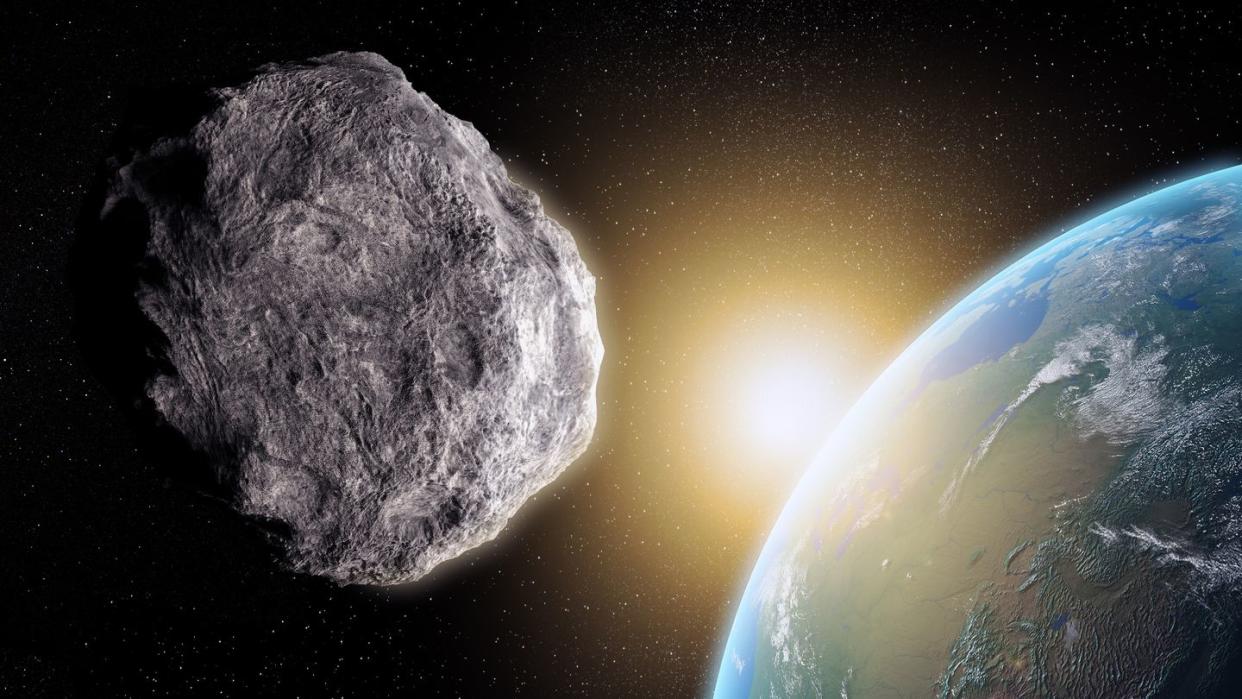Scientists Found Water on Asteroids—and the Potential for E.T. Life Just Got Real

Understanding the distribution of water throughout the Solar System—across planets, moons, asteroids, and everything in between—could help us learn how life came to be in our corner of the galaxy.
A new paper published by scientists from the Southwest Research Institute has discovered water on two asteroids—Iris and Massalia—using the SOFIA data, a joint mission between NASA and the German space agency DLR.
While scientists have found water trapped in recently returned asteroid samples, this is the first time that water has been observed on the surface of an asteroid using instruments on Earth.
Asteroids have been grabbing lots of headlines recently. A sample from the asteroid Bennu—as part of the OSIRIS-REx (now OSIRIS-APEX) mission—arrived back on Earth in September of 2023, and once NASA finally got its lid off, the samples revealed traces of carbon and water. Earlier this month, the Japanese space agency JAXA also reported evidence of “seeds of life” in the rocks collected from the asteroid Ryugu, which returned to Earth in 2020. One even exploded over Berlin last month.
Asteroids—so hot right now.
Now adding to this narrative, the Texas-based Southwest Research Institute (SwRI) has leveraged data from the recently retired joint NASA and DLR (Germany’s space agency) project, the Stratospheric Observatory for Infrared Astronomy (SOFIA), to successfully discover water molecules on the surface of an asteroid—a first for astronomy. The team published their discovery on Monday in The Planetary Science Journal.
“Asteroids are leftovers from the planetary formation process, so their compositions vary depending on where they formed in the solar nebula,” SwRI’s Anicia Arredondo, lead author of the study, said in a press statement. “Of particular interest is the distribution of water on asteroids, because that can shed light on how water was delivered to Earth.”
The water was discovered on two asteroids named Iris and Massalia, and they’re both heavyweights. Iris, located in the main belt, comes in at around 124 miles across—larger than 99 percent of the asteroids in our Solar System—and is also the fourth brightest object in the asteroid belt. And though it’s a smaller target than Iris, Massalia isn’t a pipsqueak either, and stretches 83 miles across.
SOFIA detected this water with its Faint Object InfraRed Camera (FORCAST). While data from fainter objects like the asteroids Parthenope and Melpomene contained too much noise to be conclusive, FORCAST could determine that Iris and Marssalia both contained roughly 350 milliliters of water in a cubic meter of soil.
This isn’t SOFIA’s first H2O rodeo. In 2020, NASA announced that SOFIA’s FORCAST instrument detected the tell-tale 6.1 micron wavelength signature unique to water on the surface of the Moon, and even in surprising locations like sunlit craters. The SwRI team confirms that the water is contained on asteroids in the same way it’s contained on our lonely natural satellite.
“Based on the band strength of the spectral features, the abundance of water on the asteroid is consistent with that of the sunlit Moon,” Arredondo said. “Similarly, on asteroids, water can also be bound to minerals as well as adsorbed to silicate and trapped or dissolved in silicate impact glass.”
While dry silicate asteroids tend to form close to the Sun, ice-filled ones often take shape further away from our host star. With water being an important ingredient for life—and asteroids likely being the objects that brought this important molecule to Earth—discovering water on asteroids like Iris and Massalia (or locked away in the rocks gathered from Ryugu or Bennu) helps piece together a distribution map of where water resides.
And not only in our Solar System, but around the trillions of other stars that fill the universe.
You Might Also Like

